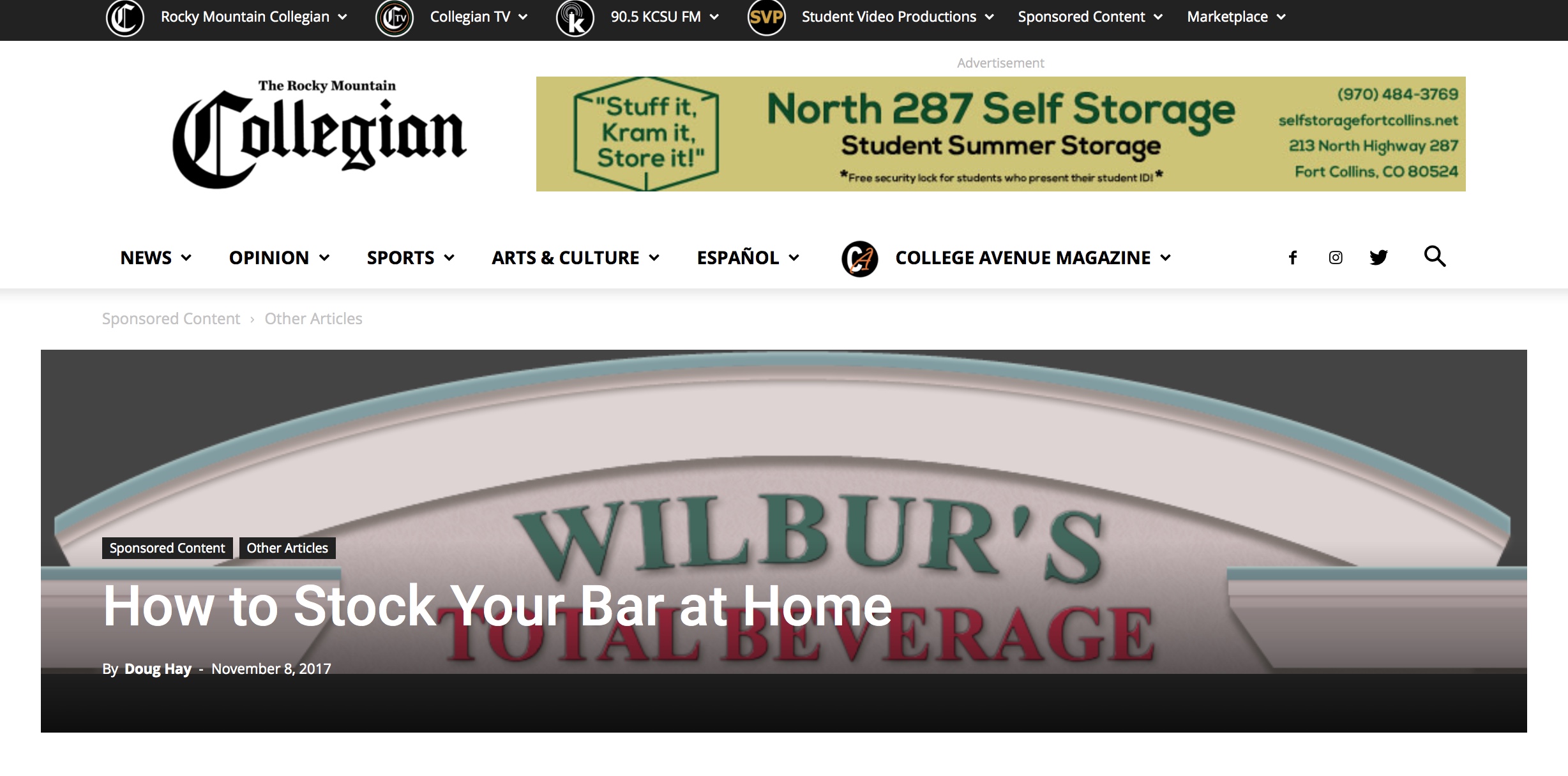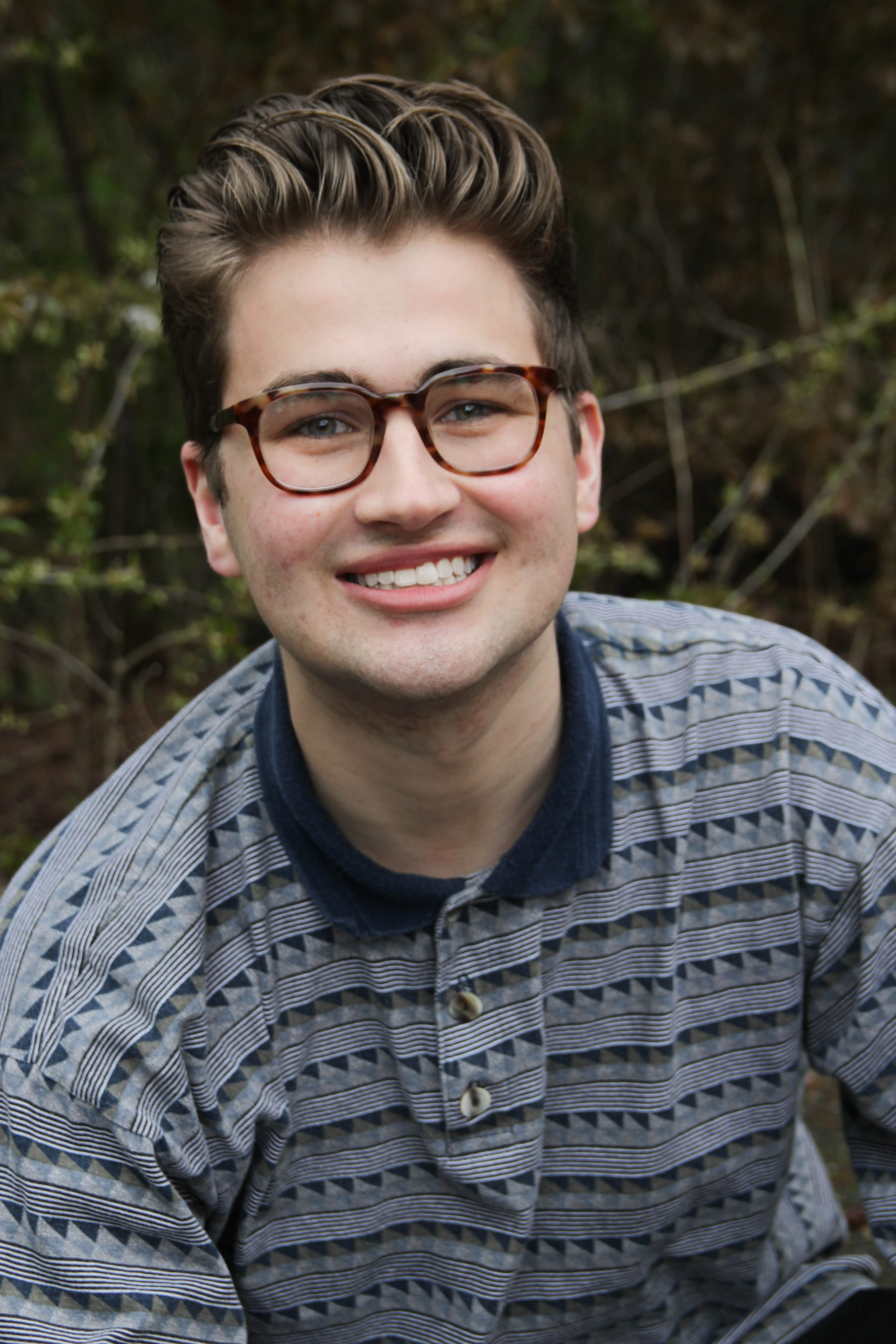Sponsored content finding a niche in college media marketing
By Matthew Salzano
Pacific Lutheran University
Consumers of Colorado State’s Rocky Mountain Collegian recently learned how to build a bar. A Ft. Collin’s liquor store owner told a freshly 21-year-old student just what to buy — from his store! — to have a classier selection in a college home than just whatever beer was cheap that week. The landing page for the video is marked with bold text, declaring it “SPONSORED CONTENT.” Sponsored content is the long-form version of advertising content that is known as native advertising.

Traditionally, ads stand out due to the difference in their form from editorial content—a quarter page ad looks different than a op-ed or reportage. With native advertising, however, the paid content looks like it natively inhabits to the platform it exists on: the liquor store video is only distinguishable from editorial video content due to that all-caps label.
The practice that was once only seen from large media outlets like Buzzfeed or the Guardian has made it to college newsrooms. Native advertising, especially creating sponsored content, poses challenges and opportunities for college newsrooms to educate and prepare students while serving clientele.
Cal Poly San Luis Obispo’s student media, Mustang News, is in its third full year of running native advertising. Production of native advertisements started when Jacob Lauing, now a Cal Poly alumnus, had finished his one-year term as student editor-in-chief.
“Around that time I started seeing a lot of major news organizations experimenting with native advertising,” Lauing said. “I was also looking for a topic to research for my senior project, so native advertising seemed like a perfect way for me to kill all those birds with one stone.”
He helped research the project with Pat Howe, an associate professor of journalism at Cal Poly, for about three months. At the end of their research, Lauing was ready to get started, so Howe went to the journalism faculty to get their blessing.
“I made a presentation to our faculty, and I said ‘Can we just have permission to sort of experiment with this in our student media? Not only might in bring in a few bucks, but it’s an excellent training ground,’” he said. “There are many many jobs in this area now, and we were sort of looking ahead to that and saying, ‘Let’s let our students get trained in the jobs of the future.’”
Howe sees three reasons to support native advertising in student media. The first is familiar to any journalist, college or otherwise: “The chief obstacle to quality journalism is money. We do need sustainable funding mechanisms for quality journalism. To experiment with this one is a good idea—to the degree it helps us do better journalism, I think we should try it.”
He also believes native advertisements are better than current advertising: in his words, “the status quo sucks!” Writing about his research with associate professor Brady Teufel in The Conversation, Howe details how digital native advertising can provide more interesting, less invasive, and better-looking content to online audiences.
Not everyone agrees with Howe’s propositions. Jena Heath, associate professor of Journalism and Digital Media at St. Edward’s University, teaches her students about native advertising, but it isn’t a part of student media. Heath has her own reservations about the practice.
“We are having an intense cultural conversation around fake news. News that isn’t news but looks like news,” Heath said. “Why aren’t we talking more about ads that look like news? Because we all need the money and so we pull our punches in a tough conversation.”
But, as college media educators, Howe’s final reason stands out: giving students the opportunity to work with native advertising gives them marketable skills for careers in media.
Even without practicing native ads, Heath approaches the topic with her students by talking through examples of the advertisements in mainstream outlets.
“We examine, together, questions of how news outlets can balance the core journalistic values of independence and transparency of method with running ads that are effective because they appear not to be ads,” she said.
Lauing said that he has found his native advertising experience at Cal Poly equipped him well for the job market. After interning at Mashable in an editorial department, he sought out jobs where he could use his experience starting native advertising at Mustang News.
“When I started applying for full-time gigs, I spent more time talking about my experience with native ads in interviews,” he said.
He’s now employed at Leaf Group — which runs channels like ehow.com — as an associate editor.
“I’m always balancing an editorial approach to great content with a need to make money off that content,” Lauing said. “I think working on sponsored content just helped me learn to live in the middle of those two worlds.”
Not everyone will have a Jacob Lauing to lead the charge for native advertising in the student newsroom. Thankfully, advisers around the country have advice about how to get started.
Start with a clear explanation to an open mind. Doug Hay, the digital services manager at Colorado State’s Rocky Mountain Student Media Corporation, said it was key to start with clients you know are willing to experiment.
“If you think about a college newspaper, most of our advertisers are small, family-owned businesses who are super busy and wearing a million different hats,” Hay said. “You start saying ‘native this, native that,’ and they say: ‘Woah, woah, woah—I just want to run my quarter page ad,’ you know?”
He recommends to “baby step clients through it.”
“Assume they know nothing. The term native meant nothing to me until someone described it to me: when they said ‘Oh, it’s because it looks like it’s native to the platform,’” Hay said. “I start there with the advertisers.”
Hay believes advertisers can benefit greatly from the service. He explained that when sponsored content is done well, it still provides useful information to readers, and associates that helpfulness with a client’s brand.
“As a consumer, you see this guy giving you all this good, useful information, and when it’s time to go to the store you think about them,” he said. “It positions the advertiser as an expert in the field, and not just a guy you buy your beer from.”
To teach an entire advertising staff how to pitch native advertising, Hay recommended identifying an outstanding student salesperson to accompany an adviser on initial pitches. That student can then teach the rest of the staff, after student and adviser have successfully found a set of best practices.
There are still logistical issues to work out once a native ad is actually secured. Paul Bittick, the professional general manager who runs the student advertising team at Mustang News, said the most important part of a native ad is to clearly mark it as advertising.
“If you have an ad in your newspaper, the reader knows that’s an ad. Native should be the same way. If someone comes in and says, ‘I want to run something that no one realizes is an ad.’ We’re not going to do that!” Bittick said. “Our purpose is to provide another alternative form of advertising for business, and [continue to] make it clear that it is advertising.”
Otherwise, it’s like launching any new product in a newsroom. You have to do your research to set clear policies, and then follow through with them, Bittick noted.
Bittick shared about how his newsroom chose to price their native advertising options. Mustang currently charges $350, but it costs $150 to produce one. Down the road, he expects the price — and profits — to increase.
“Sponsored content has a longer shelf life than a lot of other things online,” Bittick said. “When you post a story, that story stays out there into eternity at times, unless we take it down.”
But for right now, he wants to make sure it can sell.
To get started, Hay and other advisers recommended subscribing to the free Native Advertising Institute email newsletter from nativeadvertisinginstitute.com. Hay also used training modules from Hubspot.com.
Editor’s note: This article has been amended to include correct spelling and title of Jena Heath, associate professor of Journalism and Digital Media at St. Edward’s University. This corrected version also includes a word omitted from a quote by Jacob Lauing.
 Matthew Salzano is a student of communication; his interests span higher education, social justice, critical theory, and pragmatism. He has just finished his Bachelor’s degrees in Communication and Women’s and Gender Studies from Pacific Lutheran University in Tacoma, Wash. In August, he is moving across the country to begin his first year at the University of Maryland – College Park’s Department of Communication as a Ph.D. student in the Rhetoric and Political Culture track. He has previously co-authored scholarship for CMR in Vol. 54: “Lighting it up: Journalism as a Conversation at the Private University. You can find him on Twitter @matthew_paul.
Matthew Salzano is a student of communication; his interests span higher education, social justice, critical theory, and pragmatism. He has just finished his Bachelor’s degrees in Communication and Women’s and Gender Studies from Pacific Lutheran University in Tacoma, Wash. In August, he is moving across the country to begin his first year at the University of Maryland – College Park’s Department of Communication as a Ph.D. student in the Rhetoric and Political Culture track. He has previously co-authored scholarship for CMR in Vol. 54: “Lighting it up: Journalism as a Conversation at the Private University. You can find him on Twitter @matthew_paul.

Great article, informative and useful. But it leaves out the critical (and potentially expensive) process of what it takes to produce native ads: obtaining the necessary equipment (for video ads); recruiting, training and paying the necessary production staff, and so on. For small student-media programs, native advertising is a great challenge.